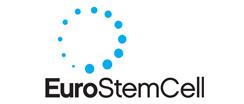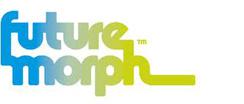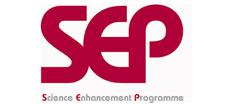Stem cells and cloning
STEM cells are undifferentiated cells that researchers hope can be ‘programmed’ to produce any kind of cell in the body. Cloning is the production of genetically identical organisms.
Both topics are often reported in the media but there is sometimes confusion in students over the difference between the techniques. They offer an opportunity to look at how scientists work and associated ethical issues.
This list includes activities that look at both topics.
Whilst this list provides a source of information and ideas for experimental work, it is important to note that recommendations can date very quickly. Do NOT follow suggestions which conflict with current advice from CLEAPSS, SSERC or recent safety guides. eLibrary users are responsible for ensuring that any activity, including practical work, which they carry out is consistent with current regulations related to Health and Safety and that they carry an appropriate risk assessment. Further information is provided in our Health and Safety guidance.
- ALL
- Teacher guidance
- Video
- Presentation
- Article
- Group work
- External link
Teacher guidance
All About Stem Cells
The What is a Stem Cell activity challenges students to make poster presentations that explain what stem cells are, where they come from and possible future uses. The activity can be used to cover the biology of stem cells.
Supporting stimulus materials and questions are included. These guide students to produce a range of posters that cover:
• What are stem cells and what do they do in the body?
• Where do embryonic stem cells come from?
• Stem cells and medical treatments.
• Making induced stem cellsWhilst labelled as age 11-14, the level of detail is suitable for 14-16 biology courses.
Students could work in small groups to complete their poster. Additionally, each group could produce a small (A5) summary of the key points. These can be pooled and copied for distribution so that the class has a full set of notes.
An exhibition allows students to view all of the posters. If the groups are split into two, one half remain with their poster and act as experts to explain their poster to viewers. Then swap over so that all get a chance to act as experts and all get to view the other posters.
Video
Case Study: Horticulture *suitable for home teaching*
This activity is best carried out in Spring, as cuttings will need several weeks to grow.
Taking a plant cutting is a simple way of demonstrating cloning in the classroom. Students should first make observations of the ‘donor’ plant. This could include features such as leaf shape, distance between side-shoots, flower form or leaf width to length ratio. The level of detail can be tailored to suit the students’ abilities.
Taking a cutting is described in the Cloning a living organism sheet in the materials. Busy lizzie (Impatiens) and pot geranium (Pelargonium spp) are ideal plants. An equipment and materials list is included.
Disposable cups and compost can be used. Carefully put some drainage holes in the bottom of the cups before filling with compost. Cuttings will need to be cultivated for several weeks and this is a good opportunity to reinforce the conditions needed for plant growth.
The final part of the investigation is to make observations on the cuttings once they have become established. Data can then be compared with those from the donor plant. This shows that their features are similar and this can be related to the fact that both the donor plant and the clones are genetically identical. Highlighting variations can lead to a discussion of the effects of external, environmental factors.
Presentation
Introducing Stem Cells *suitable for home teaching*
This uses the Points of View activity, which is found in the 14-16 materials. It looks at the ethical considerations of stem cell research.
Students are given character cards that describe six individuals with different points of view. In groups of seven, have students take on one of the characters and role play a discussion in which they need to develop a framework of regulations in which stem cell research can operate. The seventh member of the group acts as a chairperson.
Allow time for the discussion but also remind students that they need to agree a regulatory framework. If required, this can be given structure by limiting it to five rules which must be followed.
When completed, each group reveals their rules to the rest of the class. There are no right or wrong answers and common themes can then be discussed as a whole class. This is the type of activity that Government bodies perform (such as the Human Tissue Authority).
The activity is a good way to round off the topic of stem cells.
Article
What Are Stem Cells? *suitable for home teaching*
Catalyst magazine is a publication aimed at students age 14-16. This article includes an explanation of what stem cells are and the production of embryonic stem cells. It goes on to describe how stem cells may be obtained from non-embryonic tissues.
A method of teaching that is worth trying is called a ‘flipped’ lesson. Students are given content to study before the lesson and then use teacher-contact time to go through problems or tackle misconceptions.
Reading the article, and the cartoon in the Hope Beyond Hype resource, would equip students with information about stem cells. They could then use classroom time to do activities such as attempting examination questions, peer-marking and discussion of answers.
The All About Stem Cells activity below challenges students to produce poster presentations covering a range of aspects of stem cells. This could also be the focus of a ‘flipped’ lesson.
Group work
Hope Beyond Hype
A cartoon that tells the story of the discovery of stem cells. It focusses on how scientists work and the ways in which discoveries are taken from the research laboratory and to clinical therapies. Ethical and regulatory issues are also illustrated.
The cartoon is an accessible but fairly detailed. It could be used as the basis for students to produce their own television, radio or newspaper report. These could be on subjects such as:
• Stem cells and their discovery.
• Possible therapies using stem cells.
• Developing and testing new therapies.
• Ethics of embryonic stem cells.
The activities lend themselves very well to promoting group work and discussion.
External link
How Cloning Works
This web-resource describes the process of cloning in plants and animals. Students can be given time to read through the materials and in particular take note of the diagrams on pages two and four.
Students can then produce a poster or table which describes the similarities and differences between the process of cloning an organism and the production of stem cells. Encourage students to take the following steps:
• Identify the stages in cloning an organism.
• Describe the stages in stem cell production.
• Define what is produced at the end of each process.
• Consider what features their table can include.
It is useful to stress that this is not just two separate descriptions side-by-side but that similarities and differences must be highlighted.




